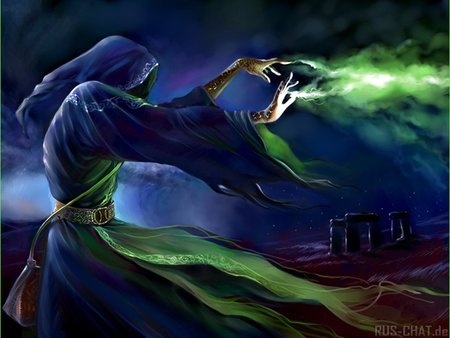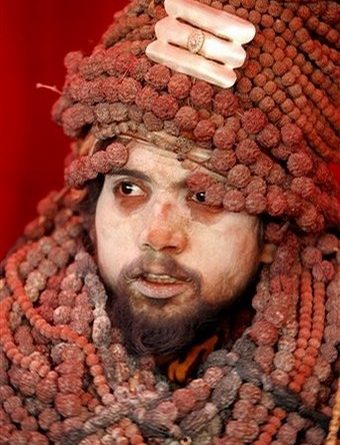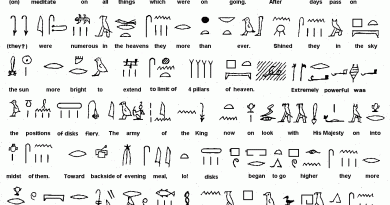What is Tantra ? Is it Black Magic of India ? – Unexplained Mysteries
By Tantrik Aghorinathji
from http://hinduism.about.com
Tantra (Sanskrit: ; “weave” denoting continuity), (anglicised tantricism or tantrism) or tantram (Sanskrit) is a religious philosophy according to which Shakti is usually the main deity worshipped, and the universe is regarded as the divine play of shakti and shiva. The word Tantra also applies to any of the scriptures commonly identified with the worship of Shakti. Tantra deals primarily with spiritual practices and ritual forms of worship, which aim at liberation from ignorance and rebirth. The tantric movement has influenced the Hindu, Bön, Buddhist, and Jain religious traditions. Tantra in its various forms has existed in India, Nepal, China, Japan, Tibet, Korea, Cambodia, Burma, Indonesia and Mongolia. Although he cautions against attempting a rigorous definition of tantra, David Gordon White offers the following definition:
Tantra is that Asian body of beliefs and practices which, working from the principle that the universe we experience is nothing other than the concrete manifestation of the divine energy of the Godhead that creates and maintains that universe, seeks to ritually appropriate and channel that energy, within the human microcosm, in creative and emancipatory ways.
Part 1: The Basic of Tantrism
Tantra has been one of the most neglected branches of Indian spiritual studies despite the considerable number of texts devoted to this practice, which dates back to the 5th-9th century AD.
Many people still consider tantra to be full of obscenities and unfit for people of good taste. It is also often accused of being a kind of black magic. However, in reality, tantra is one of the most important Indian traditions, representing the practical aspect of the Vedic tradition.
The religious attitude of the tantriks is fundamentally the same as that of the Vedic followers. It is believed that the tantra tradition is a part of the main Vedic tree. The more vigorous aspects of Vedic religion were continued and developed in the tantras. Generally tantriks worship either Goddess Shakti or Lord Shiva.
The Meaning of “Tantra”
The word “tantra” is derived from the combination of two words “tattva” and “mantra”. “Tattva” means the science of cosmic principles, while “mantra” refers to the science of mystic sound and vibrations. Tantra therefore is the application of cosmic sciences with a view to attain spiritual ascendancy. In another sense, tantra also means the scripture by which the light of knowledge is spread: Tanyate vistaryate jnanam anemna iti tantram.
There are essentially two schools of Indian scriptures “Agama” and “Nigama”. Agamas are those which are revelations while Nigama are the traditions. Tantra is an Agama and hence it is called “srutishakhavisesah”, which means it is a branch of the Vedas.
Tantric Scriptures
The main deities worshipped are Shiva and Shakti. In tantra there is a great significance of “bali” or animal sacrifices. The most vigorous aspects of Vedic traditions evolved as an esoteric system of knowledge in the Tantras. The Atharva Veda is considered to be one of the prime tantrik scriptures.
Types & Terminology
There are 18 “Agamas”, which are also referred to as Shiva tantras, and they are ritualistic in character. There are three distinct tantrik traditions Dakshina, Vama and Madhyama. They represent the three “shaktis” or powers of Shiva and are characterised by the three “gunas” or qualities – “sattva”, “rajas” and “tamas”. The Dakshina tradition, characterised by the “sattva” branch of tantra is essentially for good purpose. The Madhyama, characterised by “rajas” is of mixed nature, while the Vama, characterised by “tamas” is the most impure form of tantra.
Rustic Tantriks
In Indian villages, tantriks are still not quite hard to find. Many of them help the villagers solve their problems. Every person who has lived in the villages or has spent his childhood there, has a story to tell. What is so easily believed in the villages might appear illogical and unscientific to the rational urban mind, but these phenomena are realities of life.
Desire for Worldly Pleasures
Tantra is different from other traditions because it takes the whole person, and his/her worldly desires into account. Other spiritual traditions ordinarily teach that desire for material pleasures and spiritual aspirations are mutually exclusive, setting the stage for an endless internal struggle. Although most people are drawn into spiritual beliefs and practices, they have a natural urge to fulfill their desires. With no way to reconcile these two impulses, they fall prey to guilt and self-condemnation or become hypocritical. Tantra offers an alternative path.
The Tantrik Approach To Life
The tantrik approach to life avoids this pitfall. Tantra itself means “to weave, to expand, and to spread”, and according to tantrik masters, the fabric of life can provide true and ever-lasting fulfillment only when all the threads are woven according to the pattern designated by nature. When we are born, life naturally forms itself around that pattern. But as we grow, our ignorance, desire, attachment, fear, and false images of others and ourselves tangle and tear the threads, disfiguring the fabric. Tantra “sadhana” or practice reweaves the fabric, and restores the original pattern. This path is systematic and comprehensive. The profound science and practices pertaining to hatha yoga, pranayama, mudras, rituals, kundalini yoga, nada yoga, mantra, mandala, visualization of dieties, alchemy, ayurveda, astrology, and hundreds of esoteric practices for generating worldly and spiritual prosperity blend perfectly in the tantrik disciplines.
Part 2: Uses & Abuses of Tantrism
Proper recitation of mantras help invoke the natural forces to produce the desired effect. “Tantrasadhana” or tantrik meditation and worship helps one attain many supernatural powers. These powers may be used for good or for bad purposes.
Shiva & Shakti
Tantrik practices mainly aim at the illumination through the unification of polarities inherent in the world and one’s self. These opposites are symbolically subsumed as “Shiva” and “Shakti” or consciousness and energy, personified as male and female forces of nature. Shiva, the Destroyer, represents universal consciousness diffused throughout the galaxies, while Shakti, the Divine Mother, is the power swinging in a celestial dance, between energy and matter, giving birth to all creation, both tangible and transcendent.
Awakening the Latent ‘Shakti’ in Us
Long ago, tantrik masters discovered that to be successful externally or internally we must first awaken our latent power, for only those who are strong and blessed with great stamina reach the final destination. The key to success is the Shakti the power of the soul, the power of divine force within. Although every individual possesses an infinite and indomitable Shakti (power), most of it remains dormant. Within this Shakti, we can neither find spiritual illumination nor enjoy worldly life.
The Misuse of Tantrik Powers
Unfortunately, a large number of tantrik enthusiasts, in both the West and the East, mistakenly identify tantra as the yoga of sex, black magic, witchcraft, seduction, and an amalgam of techniques for influencing the minds of others.
This is due, at least in part, to the fact that tantra is both a spiritual path and a science. As a spiritual path, it emphasizes on the purification of mind and heart, cultivating a spiritually illuminating philosophy of life. As a science, it experiments with techniques whose efficacy depends on the precise application of “mantra” and “yantra”, ritual use of specific materials, and the performance of tantrik mudras and accompanying mental exercises.
In the layman’s language, such practices can be thought of as tantrik formulae. They will yield a result if properly applied, regardless of the character, spiritual understanding or intention of the practitioner. When this scientific aspect of tantra falls into the hands of charlatans, it is inevitably misused giving tantra a bad name. Fortunately, however, there are still tantrik masters, authentic scriptures to undercut such false and distorted notions and make it possible for us to gain a better understanding of this sublime path.
WHAT IS BLACK MAGIC

Black magic is the belief of practices of magic that draws on assumed malevolent powers. This type of magic is invoked when wishing to kill, steal, injure, cause misfortune or destruction, or for personal gain without regard to harmful consequences to others. As a term, “black magic” is normally used by those that do not approve of its uses, commonly in a ritualistic setting; the argument of “magic having no colour, and it is merely the application and use by its user,” backs the claim that not everything termed as “black magic” has malevolent intentions behind it, and some would consider it to have beneficial and benevolent uses. These uses could include killing diseases or pests.
Practitioners who use magic in this way argue that the effect itself is malevolent by causing death to insects (as in the above example), but as an indirect consequence of black magic, good can be a result, such as in the form of less pests around. In this school of thought, there is no separation between benevolent and malevolent magic as there is no universal morality against which magic can be measured. A rather different view on Black Magic is used in the system of Chaos Magick. In this branch of occult practice, spells sometimes correspond to colours, depending on the supposed effect (i.e, red-magick, which is magic concerned with combat, such as low-level curses). Black Magic, according to Chaos Magick, corresponds to magic that is performed around the themes of death, separation, severance and entropy. This can refer to powerful curses meant to bring the strongest effect, spells to sever emotional ties to objects or people, and so on.
In fiction, black magic will quite frequently be synonymous with evil, such is the case in Rosemary’s Baby, J.K. Rowling’s Harry Potter series (referred to as the dark arts in the novels), and Shakespeare’s Macbeth, with many other examples existing. In many popular video games, such as Final Fantasy, white and black magic is simply used to distinguish between healing/defensive spells (such as a “cure”) and offensive/elemental spells (such as “fire”) respectively, and does not carry an inherent good or evil connotation.
Contents
Black and white magic differences
The differences between what is considered black magic and white magic are debatable, though generally can fall within the following broad categories:
* The All as One theory states that all forms of magic are evil, irrespective of colour (white or black). This view is generally associated with Satanism. People that maintain this opinion include those belonging to most branches of Christianity
* The Dark Doctrine theory states that black magic is the powers of darkness, usually seen from a Left-Hand Path point of view. This may or may not contrast with white magic, depending on the user’s acceptance of dualism.
* The Formal Differences theory states that the forms and components of black magic are not the same due to the different aims or interests of those casting harmful spells than those of white. Harmful spell-casting tends to include symbolism that seems hazardous or harmful to human beings, such as sharp, pointed, prickly, caustic, and hot element(s) combined with very personal objects from the spell’s target (their hair, blood, mementos, etc.). This distinction can primarily be observed in folk magic, but pertains to other types of magic also.
* The No Connection theory states that both black and white magic are completely different from the base up and are accomplished uniquely, even if they achieve similar effects. This stance is often presented in fiction, and as a result, the two classes of magic-users are portrayed as being both ideologically and diametrically opposed. In The Lord of the Rings, the Elves find it strange that Humans and Hobbits can even use a single word, “magic”, which refers to both forms, as the Elvish tongues regard them also linguistically as completely separate and unrelated.
* The Separate but Equal theory states that black and white magic are exactly the same thing, differentiated only by their end goals and intent. According to this theory, the same spell could be either white or black (see gray magic); its nature is determined by the end result of the spell. The majority of religions follow this belief, as does the remainder of fiction that does not follow the No Connection theory. By this interpretation, even such spells commonly seen as good can be misused, so healing could be used to regenerate the body to the point of cancer, for instance.
Black magic practices
Within common mainstream religion, such as Christianity and modern Paganism to an extent, there are certain taboos surrounding forms of magic. Although culture may place certain forms of magic in one side or another of this spectrum, there are in fact some cultural universals about free will,
* True name spells – the theory that knowing a person’s true name allows control over that person, making this wrong for the same reason. This can also be used as a connection to the other person, or to free them from another’s compulsion, so it is in the grey area,
* Immortality – from a Taoist perspective, life is finite, and wishing to live beyond one’s natural span is not with the flow of nature. Beyond this, there is a major issue with immortality. Because of the need to test the results, the subjects must be killed. Even a spell to extend life may not be entirely good, especially if it draws life energy from another to sustain the spell,
* Necromancy – for purposes of usage, this is defined not as general black magic, but as any magic having to do with death itself, either through divination of entrails, or the act of raising the dead bodily, as opposed to resurrection or CPR,
* Curses/Hexes – a curse can be as simple as wishing something bad would happen to another, to a complex ritual.
Black magic as part of religion
Many rituals performed by black magic practitioners mentioned on television are mentioned as having aspects similar to Christianity though in a perverted form, and it appears to be universally based upon a religion, but using perverted rituals to suit the needs of the user.[citation needed] For example, black magic users might invert a pentacle just as Satanists invert a cross. Likewise, corrupted rites or sacrifice may substitute blood or faeces for the water or wine. Seen from this perspective, the distinction between black and white magic would be simple,
* White magic would be the original rituals, which embody the tenets of the religion in question. For Buddhism or Hinduism, this might be long and complex prayer sutras. Taoist and Shinto magic would largely be based upon fertility and nature rituals, and
* Black magic would be a corruption or misuse of such above rituals, using them to self-serving or destructive ends without regard for the cultural morals of the religion. This could be something such as making poppets to cause harm.



